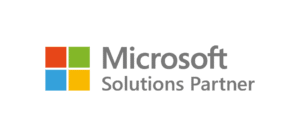Provisioning and migration together ensure the transparent use of old and new information and the smooth continuity of teamwork.

Migration refers to the transfer of data, such as documents or user accounts, from one location to another. The need for migration arises, for example, when an essential part of data processing, such as an information system, network with connections, or architecture, must be renewed.
In the planning of migration projects, the aim is usually to renew only what is necessary for the continued use of the information, service, or system, and everything else is aimed to be kept unchanged.
Migration and renewal are dictated by the constant state of change in our knowledge operating environment. Cost, safety, or usability issues can act as a driver. Increasingly, environmental and responsibility issues also dictate the need to reorganize information.
Migration planning
The quality of the data to be transferred is considered when planning the migration. Suitable tools and methods are chosen according to the situation.
The Microsoft 365 platform includes ready-made tools for migration of SharePoint or OneDrive file servers, for example. Microsoft’s free SharePoint Migration Tool is available for on-premises SharePoint migration.
In addition to these, there are excellent migration tools with license fees on the market, such as ShareGate with versatile features that make even complex migrations possible.
SharePoint workspaces or document management systems are often the target of migration as they are the locations where the information produced by the organization accumulates, and according to the old rule of thumb, one person working as an expert creates at least 100 documents per year.
Information architecture design as part of a migration
Coordinating old and future information requires careful information architecture planning.
The organization’s requirements for information structures, i.e., information architecture, have probably changed since the introduction of the source system. It does not make sense to copy all the features of the source system to the target system.
Migration tools typically know how to transfer documents with metadata to SharePoint or Teams, but they can only copy the data structures they require from the source environment to the destination.
By utilizing Solu 365 workgroup automation to create Teams or Microsoft 365 groups, it is possible to create a teamwork solution that serves both past and future requirements. It can be achieved by combining the automatic provisioning of workgroups as part of the migration project.
Provisioning automation as part of a migration
In general, the scope of the migration should be limited so that the information in active use is separated from the rest of the information content, and is transferred to a new environment, in connection with the new information.
A good migration plan aims to consider both the requirements of transferring the data as loss-free as possible and the requirements of generating new data.
By provisioning Teams or Microsoft 365 groups before migration, transparent use of old and new information can be ensured. The same data structures and similar-looking workspaces work for processing both the old data and the new active phase data. Metadata structures can be simplified and lightened, but at the same time, the part of the old data that still serves can be preserved.
The best features of the new environment, such as the applications of the Teams environment, can also be easily used by migrated, active workgroups. Data confidentiality and lifecycle management identifiers can be attached to migrated data by provisioning suitable metadata structures for groups and connecting them with the right management practices.
In workplace migrations, automatic provisioning has proven to be an invaluable aid to many organizations for which the availability of information and the continuity of teamwork are important.
Henry Scheinin
Managing consultant








